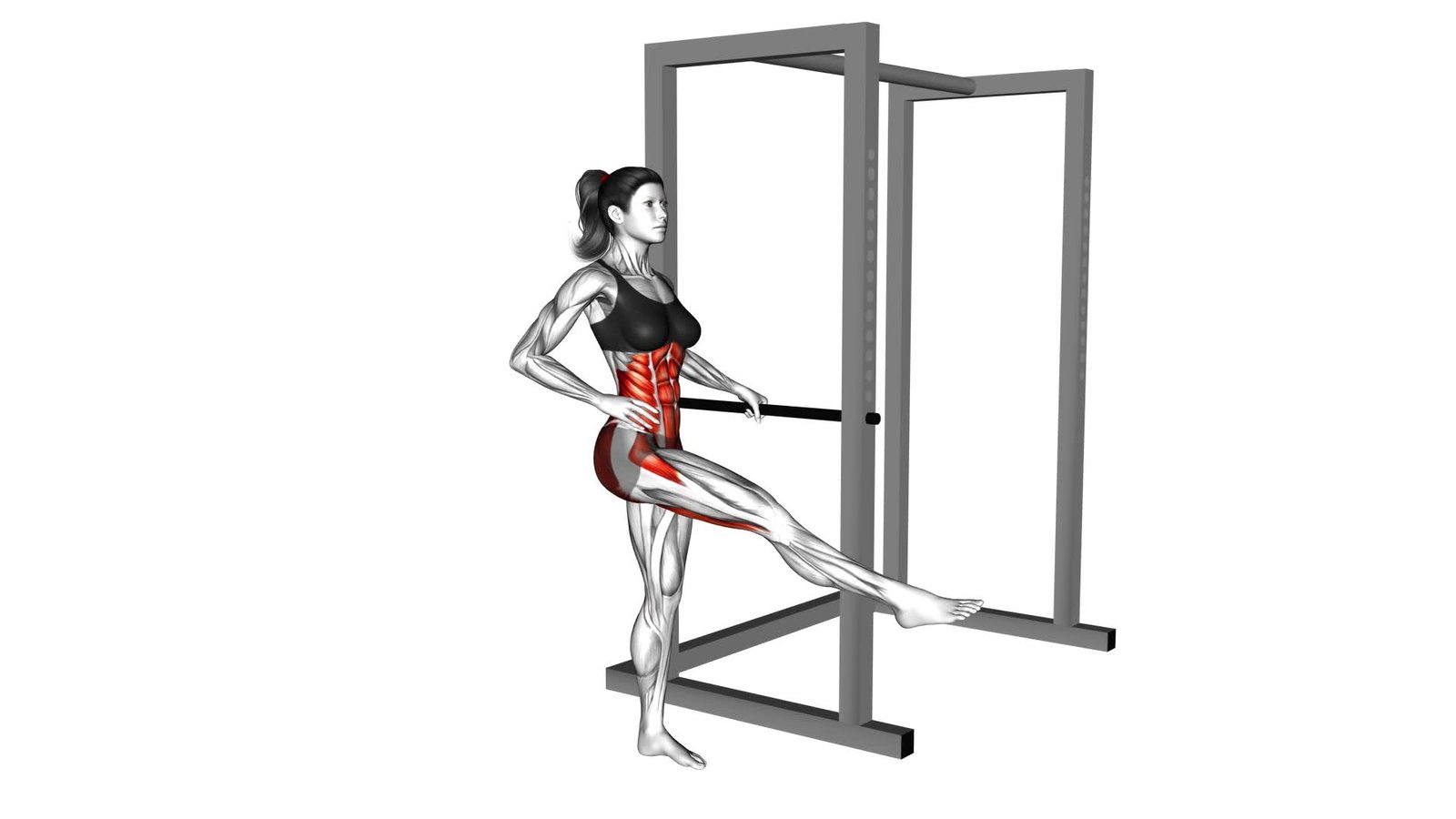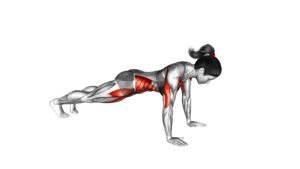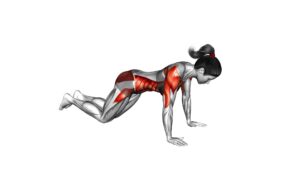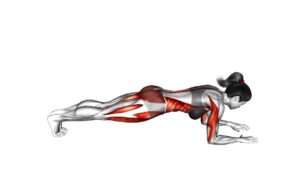Dynamic Leg Swing (female) – Video Exercise Guide & Tips

Are you looking to add some dynamic leg swings to your exercise routine?
Watch This Exercise Video
Our video exercise guide and tips are here to help! In just a few minutes, you'll learn the benefits of dynamic leg swings, proper form and technique, and variations to keep your workouts interesting.
With our step-by-step instructions and safety measures, you'll be able to incorporate dynamic leg swings into your workouts with confidence.
So grab your mat and get ready to improve your leg strength and flexibility!
Key Takeaways
- Dynamic leg swings improve flexibility in hip joints, hamstrings, and quadriceps
- They increase range of motion for greater agility
- They strengthen hip flexors, glutes, and hamstrings
- They warm up muscles and reduce the risk of strains and sprains
Benefits of Dynamic Leg Swings
You can experience numerous benefits by incorporating dynamic leg swings into your exercise routine. Dynamic leg swing exercises are a great way to improve flexibility and enhance your overall fitness level. These exercises involve moving your legs in a controlled, dynamic motion, which helps to stretch and strengthen the muscles in your lower body.
One of the main benefits of dynamic leg swings is improved flexibility. By performing these exercises regularly, you can increase the range of motion in your hip joints, hamstrings, and quadriceps. This can be particularly beneficial for athletes, as it allows for greater agility and reduces the risk of injury.
Another advantage of dynamic leg swings is that they help to activate and engage the muscles in your legs. By swinging your legs back and forth, you're targeting the hip flexors, glutes, and hamstrings. This not only strengthens these muscles but also improves their coordination and stability.
Incorporating dynamic leg swings into your exercise routine can also help to warm up your muscles before a workout. By increasing blood flow to the muscles and preparing them for movement, you're reducing the risk of strains and sprains.
Proper Form and Technique
To ensure you're performing dynamic leg swings with proper form and technique, it's important to be aware of common mistakes to avoid and follow tips for perfecting your technique.
By avoiding these common mistakes, such as swinging too forcefully or not engaging your core, you can prevent injury and maximize the benefits of this exercise.
Additionally, incorporating tips like maintaining a controlled range of motion and using your leg muscles to initiate the movement will help you achieve the perfect form for dynamic leg swings.
Common Mistakes to Avoid
Avoiding common mistakes in your dynamic leg swing exercise is crucial for maintaining proper form and technique. To ensure that you're performing the exercise correctly, be mindful of the following:
- Avoid swinging your leg too forcefully: It's important to control the movement and avoid using excessive momentum.
- Keep your core engaged: Engaging your core muscles will help stabilize your body and prevent any unnecessary movements.
- Maintain a straight posture: Make sure to keep your back straight throughout the exercise to avoid putting strain on your lower back.
By avoiding these common mistakes, you'll be able to perform the dynamic leg swing exercise with proper technique and maximize its effectiveness.
Now, let's move on to the next section to learn some tips for perfecting your technique.
Tips for Perfecting Technique
To perfect your technique and ensure proper form during the dynamic leg swing exercise, focus on maintaining control and engaging your core muscles.
One of the common errors to avoid is using excessive momentum to swing your leg. Instead, concentrate on controlled movements, allowing your leg to swing forward and backward in a smooth and controlled manner.
Another common mistake is neglecting to warm up properly before performing the exercise. Prioritize warming up your hip flexors and glutes with exercises such as leg swings and hip circles. This will help prepare your muscles for the dynamic leg swing and reduce the risk of injury.
Precautions and Safety Measures
Ensure your safety by following these precautions while performing the Dynamic Leg Swing exercise.
- Warm up properly: Before starting any exercise, it's crucial to warm up your muscles and joints. Perform some light cardio exercises like jogging or jumping jacks to increase your body temperature and prepare your muscles for the leg swings. This will help prevent injuries and improve your overall performance.
- Start with a smaller range of motion: When beginning the dynamic leg swing exercise, start with a smaller range of motion. Gradually increase the height and speed of your leg swings as your muscles become more flexible and warmed up. This gradual progression will reduce the risk of straining your muscles or causing any discomfort.
- Maintain control and balance: It's essential to maintain control and balance throughout the exercise. Avoid swinging your leg too forcefully, as this can lead to overextension or loss of balance. Focus on engaging your core muscles to stabilize your body and control the movement of your leg swings.
By following these precautions and safety measures, you can prevent injuries and maximize the benefits of the dynamic leg swing exercise.
Remember to listen to your body and stop immediately if you experience any pain or discomfort. Always consult with a healthcare professional before starting any new exercise routine.
Variations and Modifications
When exploring variations and modifications for the dynamic leg swing exercise, you can customize the movement to target different muscle groups and challenge your body in new ways.
One variation you can try is the lateral leg swing. Instead of swinging your leg forward and backward, you swing it out to the side. This targets the muscles on the side of your hip, known as the hip abductors.
Another variation is the diagonal leg swing. In this variation, you swing your leg diagonally across your body, targeting the muscles in your glutes and outer thighs.
If you want to increase the difficulty of the exercise, you can add ankle weights or use a resistance band. The added resistance will make your muscles work harder and help you build strength and stability.
Remember to start with lighter weights or a lighter resistance band and gradually increase the intensity as your strength improves.
Sample Dynamic Leg Swing Routine
Try incorporating a sample dynamic leg swing routine into your workout to target your lower body muscles and improve strength and stability. Dynamic leg swings are a great addition to any exercise routine as they provide numerous benefits.
Here is a sample routine for you to try:
- Forward Leg Swings: Stand facing a wall or a sturdy object for support. Swing one leg forward while keeping it straight. Swing it as high as comfortable and then swing it back down. Repeat for 10-12 swings on each leg.
- Lateral Leg Swings: Stand sideways to a wall or a sturdy object. Swing one leg out to the side while keeping it straight. Swing it as high as comfortable and then swing it back in. Repeat for 10-12 swings on each leg.
- Diagonal Leg Swings: Stand diagonally to a wall or a sturdy object. Swing one leg diagonally across your body while keeping it straight. Swing it as high as comfortable and then swing it back out. Repeat for 10-12 swings on each leg.
Incorporating this sample routine into your workout can help improve your flexibility, increase your range of motion, and enhance your lower body strength and stability. Remember to warm up before starting the routine and listen to your body to avoid any discomfort or pain.
Tips for Incorporating Dynamic Leg Swings Into Your Workout
To maximize the benefits of dynamic leg swings in your workout, it's important to focus on proper form techniques. This includes engaging your core, maintaining a straight back, and keeping your movements controlled and fluid.
Additionally, incorporating variations of dynamic leg swings can help challenge different muscle groups and cater to different fitness levels.
Benefits of Dynamic Swings
Incorporate dynamic leg swings into your workout for maximum benefits. Dynamic swings, also known as dynamic stretching, are an effective way to warm up your muscles and prepare them for more intense exercises.
Here are three key benefits of incorporating dynamic leg swings into your routine:
- Improved flexibility: Dynamic leg swings help to increase the range of motion in your hips, hamstrings, and quadriceps. This improved flexibility can enhance your overall performance and reduce the risk of injuries during your workout.
- Enhanced muscle activation: By engaging the muscles in your legs and core, dynamic leg swings activate and strengthen these muscle groups. This can lead to improved stability, balance, and power during exercises such as squats, lunges, and jumps.
- Increased blood flow: Dynamic leg swings increase blood circulation to the muscles, delivering oxygen and nutrients while removing waste products. This can help to reduce muscle soreness and promote faster recovery after your workout.
Incorporating dynamic leg swings into your warm-up routine can bring numerous benefits to your workout. Remember to perform them correctly and gradually increase the intensity to maximize their effectiveness.
Proper Form Techniques
To ensure proper form and maximize the effectiveness of dynamic leg swings in your workout, focus on maintaining a controlled and fluid motion throughout the exercise. Start by standing tall with your feet shoulder-width apart. Engage your core and keep your upper body stable throughout the movement.
As you swing your leg forward, aim to reach a comfortable height without overextending. Then, swing your leg back, keeping it straight and controlled. Avoid using excessive momentum or jerky movements, as this can strain your muscles and decrease the effectiveness of the exercise.
Additionally, it's important to warm up properly before attempting dynamic leg swings. This will help increase blood flow to your muscles and reduce the risk of injury.
Now, let's move on to exploring variations for different levels.
Variations for Different Levels?
If you want to add variety to your workout and challenge yourself at different levels, try incorporating different variations of dynamic leg swings into your routine. By progressing through different levels and incorporating advanced modifications, you can continuously challenge your muscles and improve your overall fitness.
Here are three variations to consider:
- Single-leg swings: Instead of using both legs, focus on swinging one leg at a time. This increases the intensity and engages your core for greater stability.
- Weighted swings: Hold a dumbbell or kettlebell in your hand while performing the leg swings. This adds resistance and helps to build strength in your lower body.
- Plyometric swings: Instead of performing the swings in a controlled manner, add a jump at the end of each swing. This increases the explosiveness and power of the exercise.
Incorporating these variations into your dynamic leg swing routine will help you progress and continue challenging your muscles. Remember to always listen to your body and choose the variations that are suitable for your fitness level.
Frequently Asked Questions
Can Dynamic Leg Swings Help Improve Flexibility in Other Parts of the Body?
Dynamic leg swings, a beneficial exercise, can actually help improve flexibility in other parts of your body. By engaging your leg muscles, these swings increase your range of motion and promote flexibility throughout your lower body.
However, it's important to combine dynamic leg swings with other exercises that target different areas of your body, such as yoga or Pilates, to achieve overall flexibility.
How Long Should I Hold Each Leg Swing for Maximum Benefit?
To maximize the benefits of leg swings, it's important to consider the duration of each swing.
The ideal length of time to hold each leg swing varies depending on your fitness level and goals. Generally, holding each swing for about 10-15 seconds can help improve flexibility and increase range of motion.
However, it's important to listen to your body and adjust accordingly. Remember, consistency is key when it comes to reaping the benefits of leg swings.
Can Dynamic Leg Swings Be Done by Individuals With Knee or Hip Injuries?
Dynamic leg swings can be a beneficial exercise. However, if you have knee or hip injuries, it's important to take precautions. Before attempting dynamic leg swings, it's recommended to consult with a healthcare professional or physical therapist. They can provide modifications and guide you on how to perform the exercise safely.
Remember to listen to your body and stop if you experience any pain or discomfort. Safety should always be a priority when exercising with injuries.
Are There Any Specific Warm-Up Exercises Recommended Before Performing Dynamic Leg Swings?
Before performing dynamic leg swings, it's important to warm up properly to prevent injuries and ensure optimal performance.
Start with a few minutes of light cardio, like jogging or jumping jacks, to increase blood flow and warm up your muscles.
Additionally, consider incorporating some dynamic stretches that target the lower body, such as leg swings or walking lunges.
Remember to listen to your body and modify the exercises based on your fitness level and any possible limitations or injuries.
Can Dynamic Leg Swings Be Done as a Standalone Workout or Should They Be Incorporated Into a Larger Routine?
Dynamic leg swings can be done as a standalone workout, but incorporating them into a larger routine can provide added benefits. By including dynamic leg swings in your routine, you can improve flexibility, warm up your muscles, and increase blood flow to the lower body.
Additionally, incorporating them into a larger routine allows for a more well-rounded workout that targets multiple muscle groups. So, while they can be done on their own, incorporating dynamic leg swings into a larger routine is recommended for optimal results.
Conclusion
Incorporating dynamic leg swings into your workout routine can offer numerous benefits, including improved flexibility, increased range of motion, and enhanced muscle activation. By following proper form and technique, and taking necessary precautions, you can safely perform this exercise.
Additionally, you can modify and vary the movements to suit your fitness level and goals. Remember to consult with a professional trainer or instructor to ensure you're performing the exercise correctly and to avoid any potential injuries.

Author
Years ago, the spark of my life’s passion ignited in my mind the moment I stepped into the local gym for the first time. The inaugural bead of perspiration, the initial endeavor, the very first surge of endorphins, and a sense of pride that washed over me post-workout marked the beginning of my deep-seated interest in strength sports, fitness, and sports nutrition. This very curiosity blossomed rapidly into a profound fascination, propelling me to earn a Master’s degree in Physical Education from the Academy of Physical Education in Krakow, followed by a Sports Manager diploma from the Jagiellonian University. My journey of growth led me to gain more specialized qualifications, such as being a certified personal trainer with a focus on sports dietetics, a lifeguard, and an instructor for wellness and corrective gymnastics. Theoretical knowledge paired seamlessly with practical experience, reinforcing my belief that the transformation of individuals under my guidance was also a reflection of my personal growth. This belief holds true even today. Each day, I strive to push the boundaries and explore new realms. These realms gently elevate me to greater heights. The unique combination of passion for my field and the continuous quest for growth fuels my drive to break new ground.







